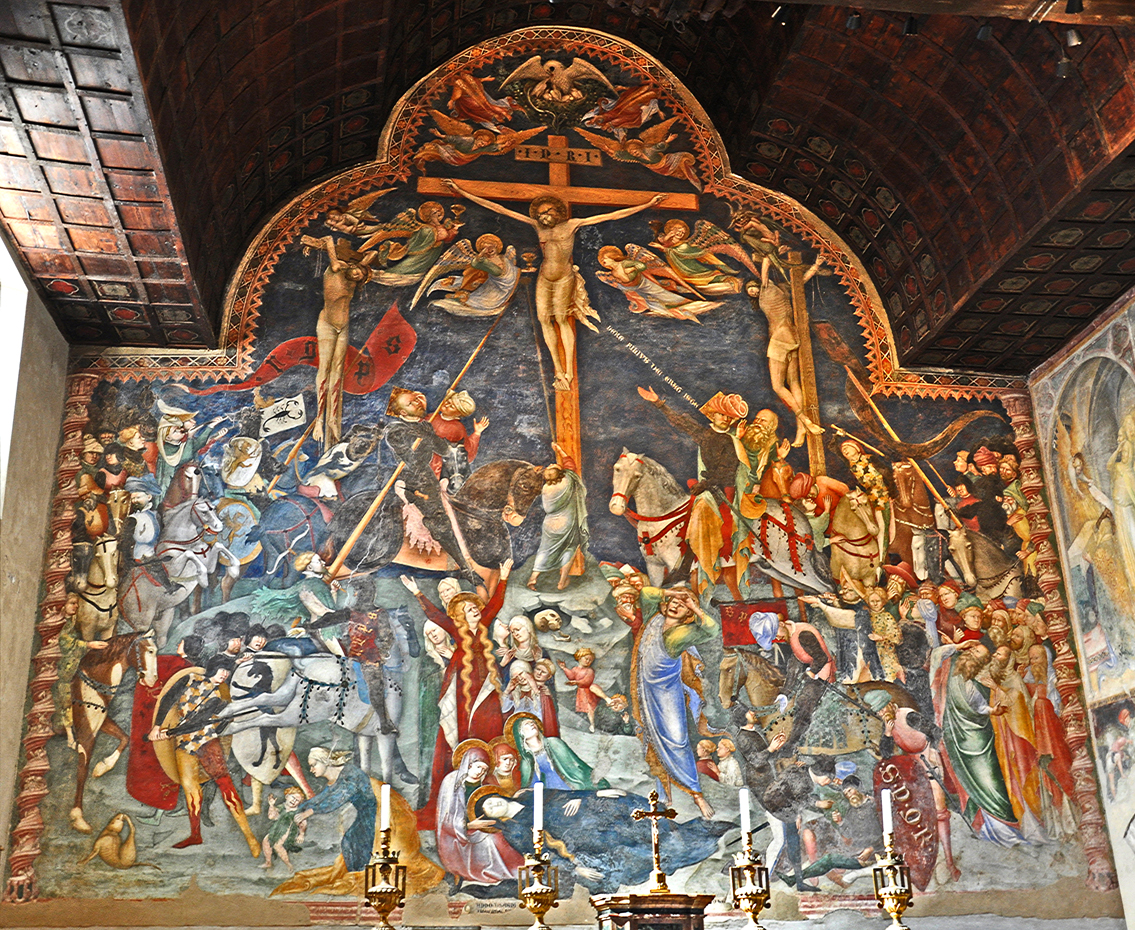Lorenzo and Jacopo Salimbeni, The Crucifixion

1416
Fresco
Oratorio of St. John the Baptist, Urbino, Italy
This enormous fresco (see
photo of the room) covers just about everything in the Gospel accounts, in an emotional style characteristic of the period. At the top, amid the lamentations of the angels, a pelican pierces its breast so as to revive its chicks with its own blood (see detail),
a traditional symbol for Christ's sacrificing himself for humanity. on the cross below (detail).
(See my page on the pelican symbol.) Below the left arm of the cross, weeping angels collect the Savior's blood in chalices, a reference to the doctrine that when consecrated the communion wine becomes his blood and body
(detail).
At the foot of the cross, the character known traditionally as Stephaton offers Jesus a long pole on the end of which he has placed a sponge soaked in vinegar and gall (Matthew 27:48, see
(detail). To the right of this figure a soldier declares vere filius dei erat iste, "Truly, this was the Son of God"
(Matthew 27:54, see (detail). In counterpoint
Longinus, the man who lances Christ's side, is
cured of his blindness.
At the very bottom below the cross are St. John, the Virgin Mary, and the women of Jerusalem who stayed with Jesus to the end
(detail). This is certainly the most emotional part of the fresco, with Mary in a dead faint, John uncharacteristically demonstrative of his grief, and Mary Magdalene raising her arms in anguish. To the right of this group are the
soldiers casting dice
for Jesus' cloak.
On the cross on the left, Dismas the "good thief" has died and an angel is tenderly bearing his soul away to Heaven
(detail).
On the right, a hideous demon carries off the soul of Gestas the "bad thief"
(detail).
The good soul is pictured as a baby, the bad one as a naked adult.
Other details from the image:
View this image in full resolution.
Read more about images of the Crucifixion.
Photographed at the site by Richard Stracke, shared under Attribution-NonCommercial-ShareAlike license.